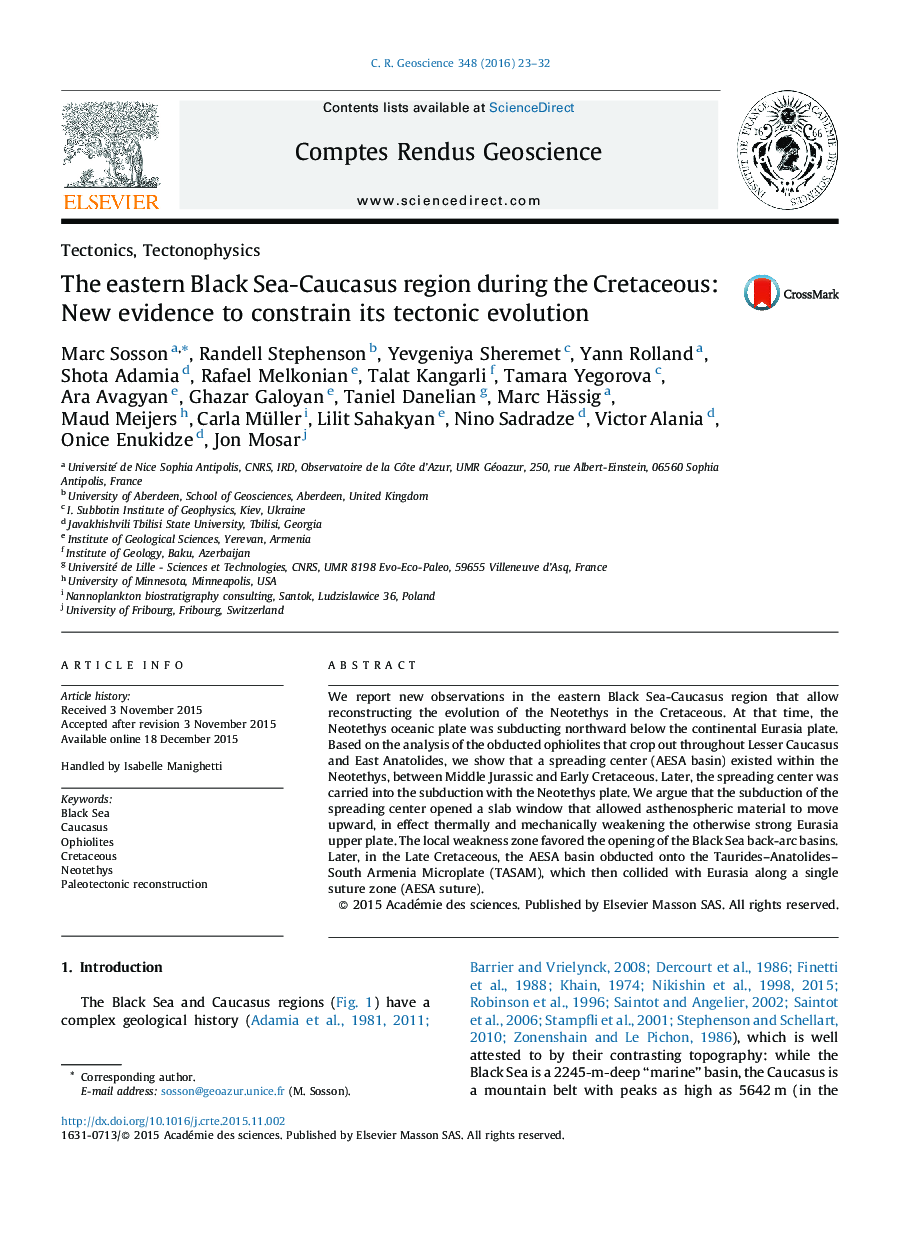| Article ID | Journal | Published Year | Pages | File Type |
|---|---|---|---|---|
| 6347850 | Comptes Rendus Geoscience | 2016 | 10 Pages |
Abstract
We report new observations in the eastern Black Sea-Caucasus region that allow reconstructing the evolution of the Neotethys in the Cretaceous. At that time, the Neotethys oceanic plate was subducting northward below the continental Eurasia plate. Based on the analysis of the obducted ophiolites that crop out throughout Lesser Caucasus and East Anatolides, we show that a spreading center (AESA basin) existed within the Neotethys, between Middle Jurassic and Early Cretaceous. Later, the spreading center was carried into the subduction with the Neotethys plate. We argue that the subduction of the spreading center opened a slab window that allowed asthenospheric material to move upward, in effect thermally and mechanically weakening the otherwise strong Eurasia upper plate. The local weakness zone favored the opening of the Black Sea back-arc basins. Later, in the Late Cretaceous, the AESA basin obducted onto the Taurides-Anatolides-South Armenia Microplate (TASAM), which then collided with Eurasia along a single suture zone (AESA suture).
Related Topics
Physical Sciences and Engineering
Earth and Planetary Sciences
Earth and Planetary Sciences (General)
Authors
Marc Sosson, Randell Stephenson, Yevgeniya Sheremet, Yann Rolland, Shota Adamia, Rafael Melkonian, Talat Kangarli, Tamara Yegorova, Ara Avagyan, Ghazar Galoyan, Taniel Danelian, Marc Hässig, Maud Meijers, Carla Müller, Lilit Sahakyan, Nino Sadradze,
